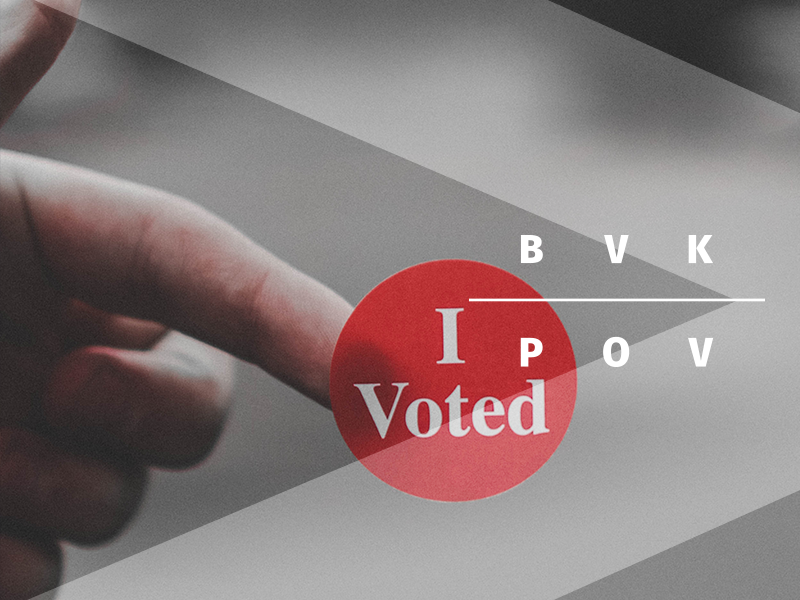Navigating Social Media Marketing During an Election Year
BVK

How Does an Election Year Impact Digital Advertising Spend in the U.S.?
As major election years approach, U.S. presidential candidates ramp up advertising spend to astronomical levels. Political spending in 2018 was shockingly high at more than $2 billion (roughly 2%) of total digital ad spending in the U.S. that year. In 2020, political digital ad spend is projected to reach nearly $3 billion.
According to Facebook’s Ad Library Report, which enables the general public to explore, filter and download data for Facebook ads about social issues, elections, or politics, the Donald J. Trump Campaign has alone spent more than $17.5 million on roughly one quarter of a million Facebook ads.
What does this mean for brands on social media?
Considering digital media continues to command a higher percentage of brands’ paid media budgets each year, increased spend from political advertisers should not change anything, right? Not quite. Here are a few ways we’ve seen election years impact social media marketing for brands.
Peak Competition – With a sea of political advertisers flooding the paid social media auctions, brands should certainly expect to see much higher costs-per-action (CPAs) in their campaigns. So much so that some experts estimate brands’ costs on social media will swell to more than 10x normal during times of peak political spending.
Heightened Ad Guidelines – The 2016 election year not only marked a first in social media ad spend but also sparked debate around disinformation and fears of the infamous ‘fake news.’ All the major social media channels have since introduced policies aimed to help social media users better understand how political ads are being funded as well as curb sensational messaging within ads. While these heightened guidelines aren’t intended to censor brands, any messaging relating to issues of national importance, such as healthcare, will face greater scrutiny during peak political seasons.
Potential Distrust of Social Media Ads – The ‘fake news’ phenomenon of the 2016 elections created a distrust of less-known social media publishers among many American social media users. Depending on the industry, less popular brands and new brands may face a more cautious audience as a result.
How can brands adapt and overcome?
While the social media landscape for brands during an election year may seem bleak, there are a number of strategies savvy social media marketers can employ to cut through the noise.
Proper Preparation – Forward-thinking marketers plan ahead for known windows of elevated opportunity, such as commercial holidays or peak seasons. Inversely, the 2020 political season should be no different. Armed with the learnings from the 2016 and 2018 elections, brands must recognize the potential hurdles they’ll surely face and strategize ways to overcome.
- Resist the urge to join in. Brands on social media often lean into trending topics head-on and find ways to insert themselves into conversations online to increase relevancy. And sometimes it works. We feel it’s in the best interest to avoid the temptation to join political conversations happening online. Stick to key messaging and allow political social chatter to happen separately.
- Put yourself in their shoes. Another way brands can prepare for heavy political activity on social media is to consider the goals and target audiences of political advertisers. What will they be optimizing campaigns towards? Who will they be targeting with social media ads? Strategize ways to be active on social without competing against political advertisers.
Follow Best Practices – The increased competition on social media means social media marketers will need to fight for every inch of space in users’ feeds. Align with the social media strategies that have proven to be effective for your brand. On Facebook, for example, we recommend using broader audience targeting and leveraging Campaign Budget Optimization (CBO) to provide the algorithms with more opportunity to find those users who will take a desired action. Maximize creative output with dynamic creative to reduce branded ad fatigue.This will provide the algorithm with additional options to best hone in on what content is resonating with your audience during this time of increased platform advertisers.
Consider Communicating Through Trusted Third-Parties – During an election year, the general public will be more divided than ever. Certain messaging promoted on social media can be viewed as sensational and thus distrustful. We recommend partnering with trusted social media influencers to share stories rather than solely relying on branded messaging through owned channels.
Pulse Social Media Ad Spending in Early 2020 – While there are many factors that affect brands’ paid media schedule, those that are able should consider a heavy-up in early- to mid-2020 to mitigate heightened CPMs synonymous with larger political seasons.
What does this mean for your social media ads?
We will almost certainly see an impact when political advertisers ramp up their efforts, even if it’s an increase in CPA. It’s hard to predict what negative actions (hiding, reporting, etc.) might be taken against our advertisements from users, though due to the nature of our ads, we don’t anticipate increased negative engagement.
It’s worth having a conversation about any desired shifts in social media strategy during the election season with your social media strategist to ensure that you maintain momentum and success with your paid social media dollars.
Five Key POV Takeaways
- Election years will transform an already competitive social media landscape into an all-out battle for consumers’ attention.
- Thanks, 2018 (and 2016). Many argue social media directly affected the outcomes of recent elections. Social media channels have since faced higher scrutiny and as a result, brands now do too.
- Brands can overcome the highly-competitive landscape and extra monitoring with proper preparation and planning.
- Having a strong social media strategy, rooted in best practices, will be more important than ever.
- Brands that consider sharing messages through neutral third parties may find the sweet spot.